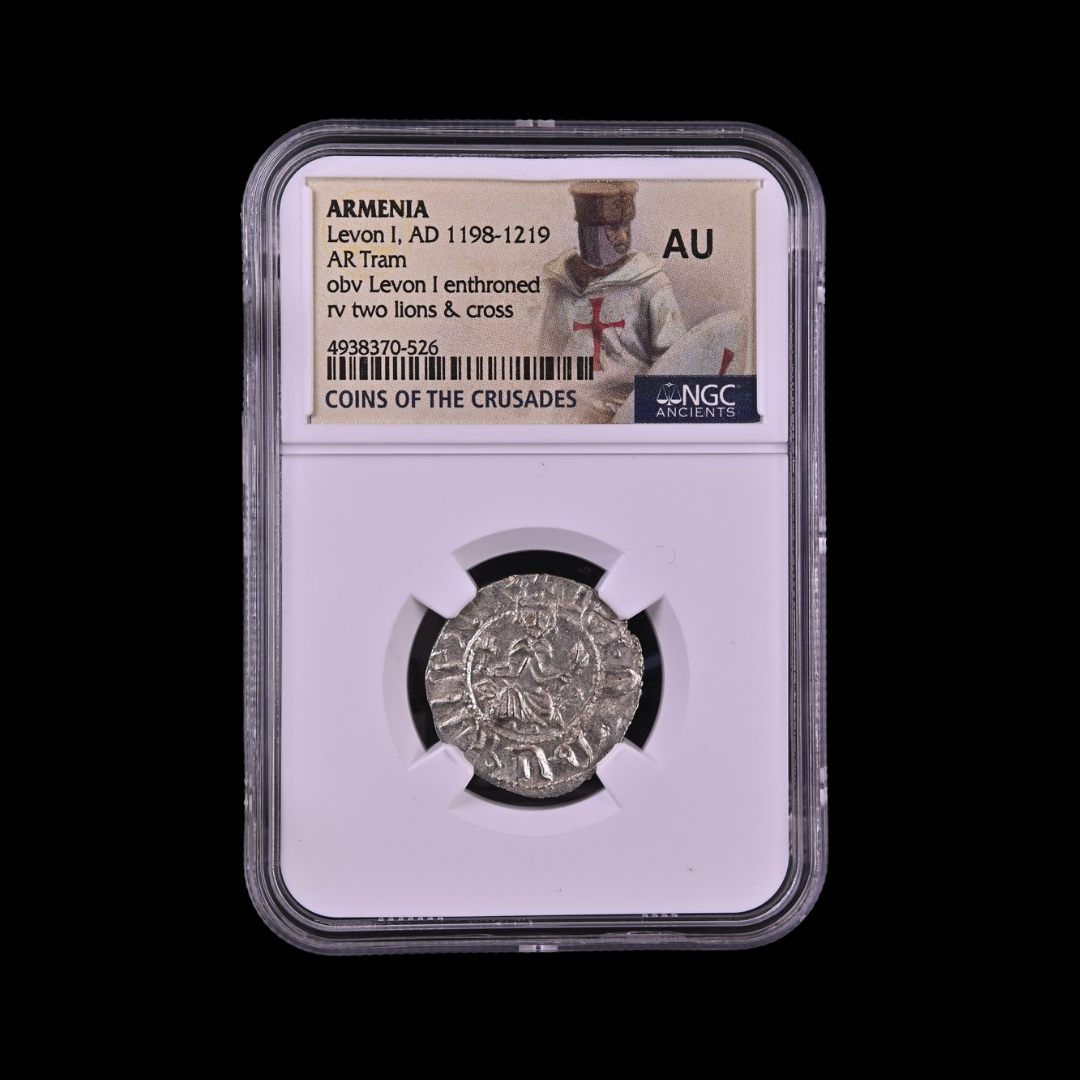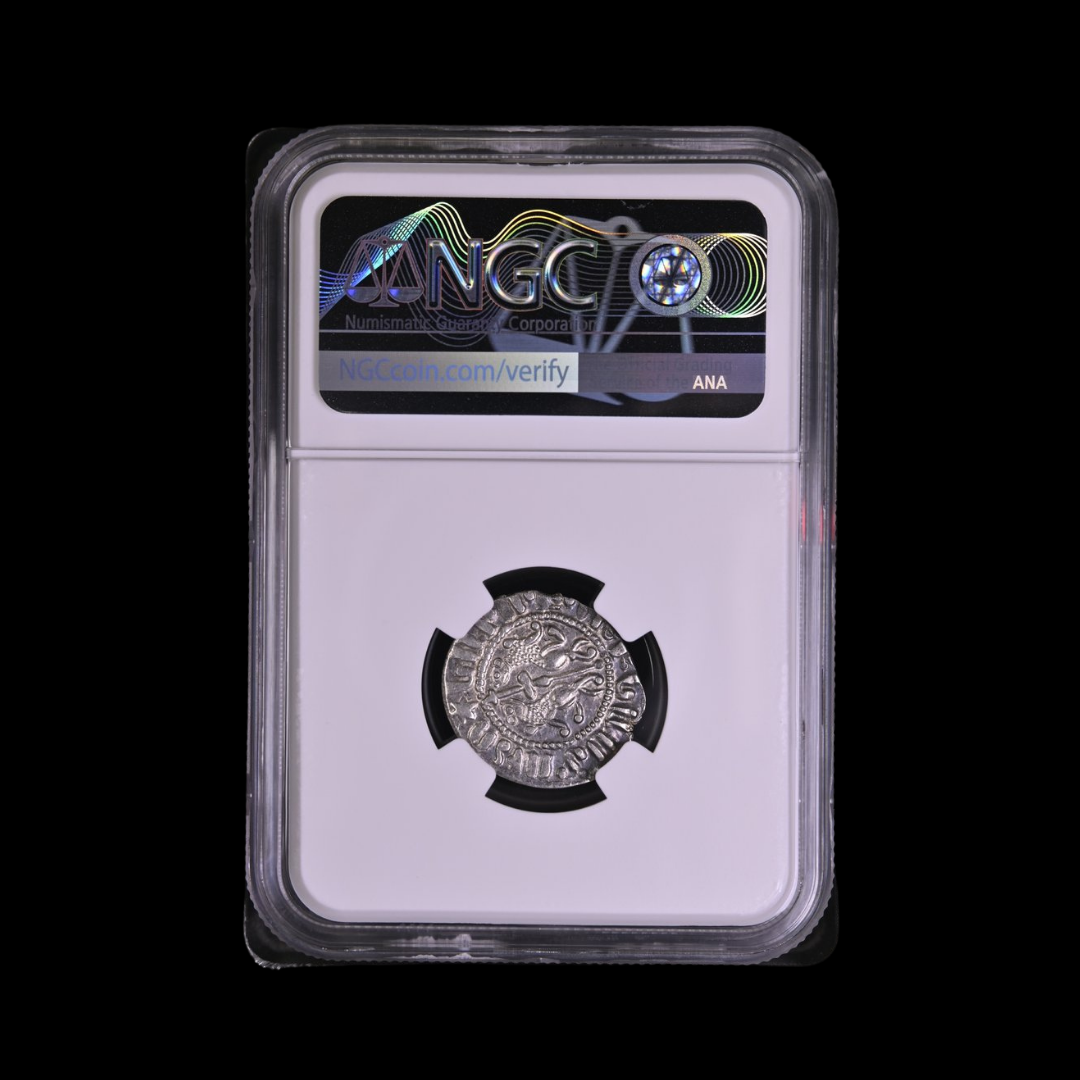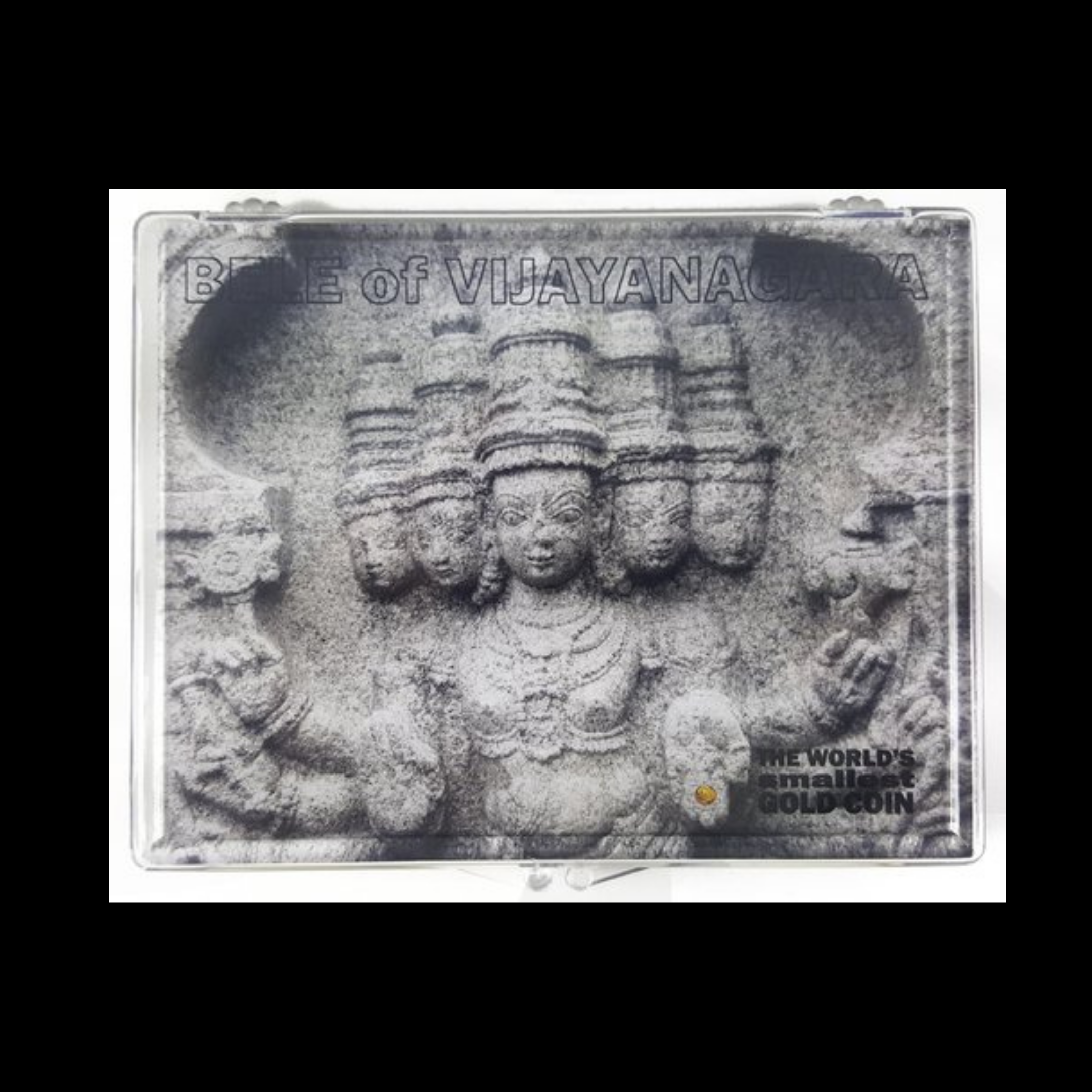 Image 1 of 2
Image 1 of 2

 Image 2 of 2
Image 2 of 2



Armenian Silver Tram of Levon I (about 800-825 years ago)
This is a silver coin from medieval Armenia during the reign of King Levon I, representing the emergence of the Armenian Kingdom of Cilicia as a significant player in Mediterranean trade and politics.
Coin Description:
Front side (Obverse): Depicts King Levon I enthroned, symbolizing his royal authority
Back side (Reverse): Features two lions and a cross, combining secular and religious symbolism
Technical Details:
Silver composition (AR)
Tram denomination (traditional Armenian currency unit)
Certified by NGC with grade AU (About Uncirculated)
Minted during 1198-1219 CE
Historical Significance: Levon I (Leo I) was the first king of Armenian Cilicia, elevating what had been a principality to full kingdom status. His reign marked a period of relative prosperity for Armenians who had fled their traditional homeland after Seljuk Turkish invasions. The kingdom became an important ally to European Crusader states and developed diplomatic relations with both Western European powers and the Byzantine Empire. The iconography on this coin reflects both Armenian cultural identity and their adoption of Western feudal symbols during this period.
This is a silver coin from medieval Armenia during the reign of King Levon I, representing the emergence of the Armenian Kingdom of Cilicia as a significant player in Mediterranean trade and politics.
Coin Description:
Front side (Obverse): Depicts King Levon I enthroned, symbolizing his royal authority
Back side (Reverse): Features two lions and a cross, combining secular and religious symbolism
Technical Details:
Silver composition (AR)
Tram denomination (traditional Armenian currency unit)
Certified by NGC with grade AU (About Uncirculated)
Minted during 1198-1219 CE
Historical Significance: Levon I (Leo I) was the first king of Armenian Cilicia, elevating what had been a principality to full kingdom status. His reign marked a period of relative prosperity for Armenians who had fled their traditional homeland after Seljuk Turkish invasions. The kingdom became an important ally to European Crusader states and developed diplomatic relations with both Western European powers and the Byzantine Empire. The iconography on this coin reflects both Armenian cultural identity and their adoption of Western feudal symbols during this period.
This is a silver coin from medieval Armenia during the reign of King Levon I, representing the emergence of the Armenian Kingdom of Cilicia as a significant player in Mediterranean trade and politics.
Coin Description:
Front side (Obverse): Depicts King Levon I enthroned, symbolizing his royal authority
Back side (Reverse): Features two lions and a cross, combining secular and religious symbolism
Technical Details:
Silver composition (AR)
Tram denomination (traditional Armenian currency unit)
Certified by NGC with grade AU (About Uncirculated)
Minted during 1198-1219 CE
Historical Significance: Levon I (Leo I) was the first king of Armenian Cilicia, elevating what had been a principality to full kingdom status. His reign marked a period of relative prosperity for Armenians who had fled their traditional homeland after Seljuk Turkish invasions. The kingdom became an important ally to European Crusader states and developed diplomatic relations with both Western European powers and the Byzantine Empire. The iconography on this coin reflects both Armenian cultural identity and their adoption of Western feudal symbols during this period.
Leo II (Armenian: Լեւոն Ա Մեծագործ, romanized: Levon I. Metsagorts; 1150 – 2 May 1219)[a] was the tenth lord of Armenian Cilicia,[4] ruling from 1187 to 1219,[7]: [page needed] and the first king to be crowned, in 1198/9 (sometimes known as Levon I the Magnificent[4]).[b][4][7]: [page needed] Leo eagerly led his kingdom alongside the armies of the Third Crusade and provided the crusaders with provisions, guides, pack animals and all manner of aid.[3]
He was consecrated as king on 6 January 1198[7]: [page needed] or 1199.[4]
He was the younger son of Stephen, the third son of Leo I, lord of Armenian Cilicia.[7]: [page needed] His mother was Rita, a daughter of Sempad, Lord of Barbaron.[10] Leo's father, who was on his way to attend a banquet given by the Byzantine governor of Cilicia, Andronicus Euphorbenus,[4] was murdered[7]: [page needed] on 7 February 1165.[citation needed] Following their father's death, Leo and his elder brother Roupen lived with their uncle.[4][11]











